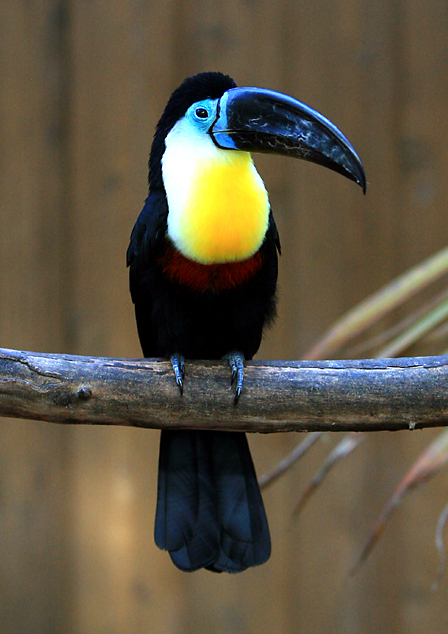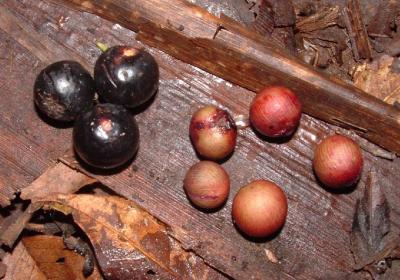A recent public release by the American Association for the Advancement of Science, titled “Human activity echoes through Brazilian rainforests,” points out that the loss of large-beaked birds has led to smaller, weaker seeds in nearby palm trees. The disappearance of large, fruit-eating birds from tropical forests in Brazil has caused the region’s forest palms to produce smaller, less successful seeds over the past century, researchers say. The findings provide evidence that human activity can trigger fast-paced evolutionary changes in natural populations.
Mauro Galetti from the Universidade Estadual Paulista in São Paulo, Brazil, along with an international team of colleagues, used patches of rainforest that had been fragmented by coffee and sugar cane development during the 1800’s to set up their natural experiment. They collected more than 9,000 seeds from 22 different Euterpe edulis palm populations and used a combination of statistics, genetics and evolutionary models to determine that the absence of large, seed-dispersing birds in the area was the main reason for the observed decrease in the palm’s seed size.
The study appears in the 31 May issue of the journal Science. “Unfortunately, the effect we document in our work is probably not an isolated case,” said Galetti. “The pervasive, fast-paced extirpation of large vertebrates in their natural habitats is very likely causing unprecedented changes in the evolutionary trajectories of many tropical species.” In general, researchers estimate that human activity, such as deforestation, drives species to extinction about 100 times faster than natural evolutionary processes. However, very few studies have successfully documented such rapid evolutionary changes in ecosystems that have been modified by human activity.
Galetti and the other researchers found that palms produced significantly smaller seeds in patches of forest that had been fragmented by coffee and sugar cane plantations and were no longer capable of supporting large-gaped birds, or those whose beaks are more than 12 millimeters wide, such as toucans and large cotingas. In undisturbed patches of forest, on the other hand, large-gaped birds still make their homes and palms continue to produce large seeds, successfully dispersed by the birds, they say. “Small seeds are more vulnerable to desiccation and cannot withstand projected climate change,” explained Galetti. But, small-gaped birds, such as thrushes, that populate the fragmented patches of forest are unable to swallow and disperse large seeds. As a result of this impaired dispersal, palm regeneration became less successful in the area, with less-vigorous seedlings germinating from smaller seeds.
The researchers considered the influence of a wide range of environmental factors, such as climate, soil fertility and forest cover, but none could account for the change in palm seed size over the years in the fragmented forests. They performed genetic analyses to determine that the shrinkage of seeds among forest palms in the region could have taken place within 100 years of an initial disturbance. This timescale suggests that the conversion of tropical forests for agriculture, which began back in the 1800’s and displaced many large bird populations in the region, triggered a rapid evolution of forest palms that resulted in smaller, less successful seeds.
Long periods of drought and increasingly warmer climate (as predicted by climate model projections for South America) could be particularly harmful to tropical tree populations that depend on animals to disperse their seeds. About 80 percent of the entire Atlantic rainforest biome remains in small fragments, according to the researchers, and the successful restoration of these habitats critically depends on the preservation of mutualistic interactions between animals and plants. “Habitat loss and species extinction is causing drastic changes in the composition and structure of ecosystems, because critical ecological interactions are being lost,” said Galetti. “This involves the loss of key ecosystem functions that can determine evolutionary changes much faster than we anticipated. Our work highlights the importance of identifying these key functions to quickly diagnose the functional collapse of ecosystems.”




